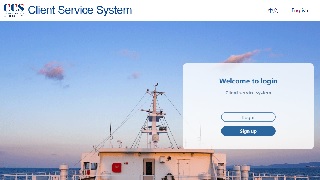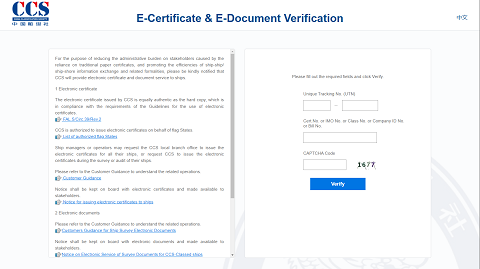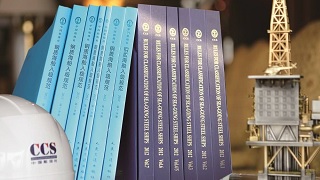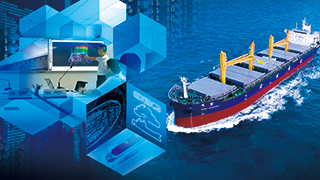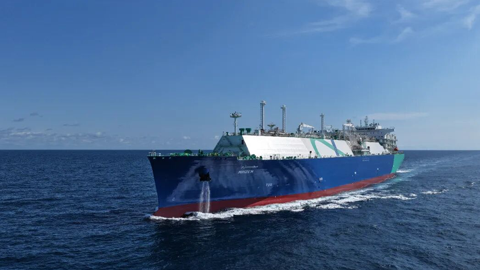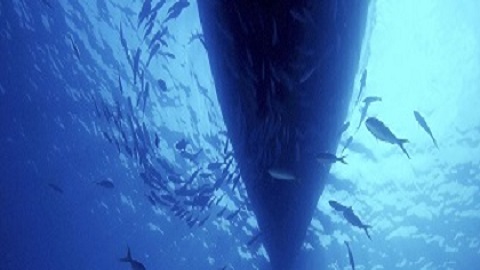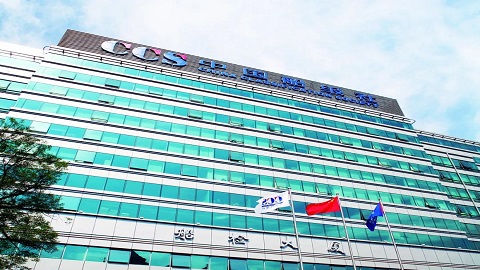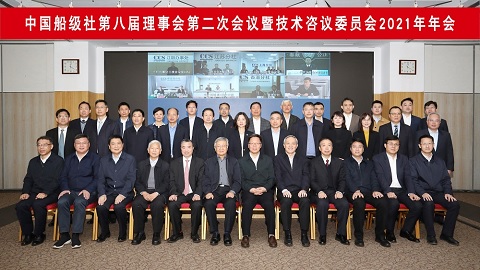12/15.2020
I.
Software overviewCOMPASS
Inland 2019 is a piece of professional computation software for ships
independently developed by CCS and it currently includes the following four
subsystems to implement hull (body and cabin) modeling as well as hydrostatics,
cabin capacity, integrity stability, allowable gravity center height, damage
stability, tilt test, total longitudinal strength (combination of total
longitudinal bending and long hatch bending and torsion), tonnage, EEDI, and
other computation and verification functions:1) Three-dimensional
hull modelingThe
modeling method of the hull (body and cabin) is upgraded from the traditional
offset table method to 3D modeling in a step-wise way "shape line >
shape surface > main hull > cabin" as is conventional in the
shipbuilding industry, so as to describe the hull and cabin accurately and
support 3D hull modeling of any shape, including bulbous bow, multiple stern,
convex deck, raised deck, bow thrust, bottom tunnel, etc., suitable for
modeling asymmetrical catamarans, combined hulls and other special complex ship
types.
The 3D
visualized interaction ability: the software supports graphic picking, feature
point capturing, reverse box selection (any part of graphic object is selected
when it falls within the box) and undo/redo, which further improves the
convenience and intuitiveness of modeling.
Providing
command flow for fast modeling: this function is suitable for skillful and
advanced users to realize one-click modeling from scratch, especially for fast
modeling of the whole ship and modification of master mold ship.Compatible
with the conventional offset table: molded lines can be created from the offset
table, which is convenient for users who prefer using the offset table to
realize rapid modeling and migrating master mold ship data; The offset table
can also be output from the 3D hull, which is convenient for the user to check
the consistency between the model and the real data of ship. In particular, the
ship drawing inspecting institutions speak highly of this function.
Supporting
reference expression modeling and linkage modification: it is able to use an
expression to represent a coordinate point or its coordinate components, for
example, #10+100 represents the
longitudinal X coordinate of rib #10 offset by 100mm, S1/Z=1 represents the point with Z value of 1 on station line S1,
and S1/W1 represents the intersection of station line S1 and waterline W1;
Users do not have to memorize or input numerous coordinate values for modeling,
thus greatly simplifies data input and ensures the coordinate consistency of
curves in different directions at intersections. When the curve (referenced
line) in the reference expression is modified, the associated curve will also
update by linkage, as shown in the following figure.
Support
for parameterized rapid modeling of simple cabin: A 3D cabin is intercepted at
the hull by specifying X positions at both ends of cabin and feature points at
end faces. As shown in the following figure, this modeling approach is
completely consistent with the human way of thinking and thus easy to use,
especially suitable for simple cabins such as starboard cabin and bilge cabin.
Boolean
assembly modeling of complex cabin: complex cabins are generated by
body-to-body (cabins) Boolean assembly, as shown in the following figure of a
stern located fuel tank. This modeling method accords with people's visual
cognition and can describe complex cabins intuitively and accurately just like
assembling toy building blocks.
In
addition, general interfaces such as IGES are provided to realize model
intercommunication with other software, so that users can make full use of
existing data models to improve work efficiency, including the use of this
software's models in other software or to use other software's models in this
software.2)
Stability computation and calibrationThe
software realizes computation of hydrostatics, tank capacity curve, complete
stability, allowable gravity center height, damage stability and tilt test,
which are used for auxiliary design and drawing review of inland waterway and
river-sea intermodal ships, and are applicable to all ship types listed in the Technical Rules for Statutory Survey of
Inland Waterway Vessels (2011 Edition, 2015 Revision Circular, 2016
Revision Circular, 2018 Revision Circular, 2019 Edition) and the Technical Rules for Statutory Survey of
River-Sea Intermodal Ships on Specific Routes (2018), including dry cargo
ships, liquid cargo ships, passenger ships, container ships, self-discharging
sand ships, dredgers, crane ships, barges, bulk carriers, commercial automobile
RORO (Roll on Roll off) vessels.
In
addition, compared with the conventional slice integration algorithm, our new
independently developed 3D algorithm not only improves the computation
accuracy, but also gets rid of the limitation of hull shape, and can be applied
to 3D hulls of any shape, such as spherical bow, multi-stern, stem-to-stern
elevation, convex deck, multi-body, floating dock, combined hull, etc.
3)
Calculation of total longitudinal strengthThe thin-walled
equal-straight finite beam method is adopted to calculate and check the total
longitudinal bending of hull beams and the combined bending and torsion
strength of ships with long and large openings. The method is applicable to the
ship types listed in the Code for
Construction of Steel Inland Waterway Ships (2016 and 2019 Revision
Circular) and the Code for Construction
of River-Sea Intermodal Ships on Specific Routes (2018).In
addition, seamless connections with the stability module is realized by taking
hull loads obtained from stability computation as input, thus avoiding repeated
input of shared data such as weight, center of gravity and simplifying
computational workload.4)
Licensing computation and evaluationThe
software realizes computation and evaluation of the technical indexes as per
applicable codes and regulations required for issuing certificates, such as
gross tonnage, net tonnage and EEDI. It is applicable to the ships listed in
the Technical Rules for Statutory Survey
of Inland Waterway Vessels (2011 Edition, 2015 Revision Circular, 2016
Revision Circular, 2018 Revision Circular, 2019 Edition) and the Code for Inland Waterway Green Ships
(2018). In particular, it supports accurate computation with the 3D hull model
as input.
II.
Suitable customers and benefits
The
software is suitable for ship design organizations, ship building and repairing
organizations, ship survey organizations, maritime organizations, universities,
and research institutes. The customers can obtain the following benefits and
rights:Accurate
and reliable computation of stability, total longitudinal strength, etc.,
viewing in graphic and table forms, and one-click export of reports;Collaboration
between designer and surveyor, which can greatly shorten the overall cycle and
improve work efficiency;Standardization
of the same hull model according to multiple different versions of
specifications, for example, "tracing" of old ships according to the
new standard;Ability
to run independently without relying on any other application software,
real-time technical support through QQ group, mail, telephone and other means.As of
June 2020, the software has been applied in more than 300 organizations across
the country, including CSSC No. 708, No. 702, and No. 701 Institutes, Wuchang
Shipbuilding Industry Group, Guangzhou Shipyard International Company, SDARI,
Yangtze River Ship Design Institute, Wuhan University of Technology and other
well-known organizations, where it is widely used in ship aided design, drawing
inspection, safety assessment, standardized scientific research, teaching and
training, etc. Geographically, the users cover 23 provinces and municipalities
including Guangdong, Guangxi, Chongqing, Hubei, Hunan, Anhui, Jiangsu,
Shanghai, Zhejiang, Fujian, Jiangxi, and Heilongjiang, with ships navigating
the Yangtze River, Pearl River, Heilongjiang, Beijing-Hangzhou Canal and other
water systems.
Compared
with the old version of the software before 2016, the 2019 version has
advantages in terms of ease of use, data sharing, and model interoperability:
1)
Hull modeling has been upgraded from 2D to 3D and provided with multi-level
modeling tools, including pickup and capture, command flow, reference
expressions, modification linkage, model value table, IGES interface, etc.,
which greatly improves the modeling intuitiveness, convenience, accuracy, ship
model adaptability and model interoperability.(2)
The computation function breaks through the hull shape constraints, solves the
problem of ship type adaptability, and improves the accuracy of computation.(3) A seamless
connection is realized through stability, strength and other related modules,
and intelligent assistance provides professional computation parameters input;
all those functions, along with data checking, greatly reduce human factor
errors and eliminate repeated data entry, making the software more
user-friendly and efficient.4) It
eliminates the shortcomings of only supporting current standards, integrates
the computation calibration for different periods selected, and simplifies software
management. It is fully adaptive to the differentiated needs of the industry as
to the traceability of old ships.III.
Customer service This
software adopts a licensing system.Technical
support: Chen Zhibiao zbchen@ccs.org.cn 0086-27-85423516 Chen Qingren
qrchen@ccs.org.cn 0086-27-85865132Marketing
work: Cheng Shiyao sycheng@ccs.org.cn 0086-27-85825842
Online classroom:https://ke.qq.com/course/2273767?taid=8894039753667047&tuin=f5b1c2
COMPASSInland20200821Download

